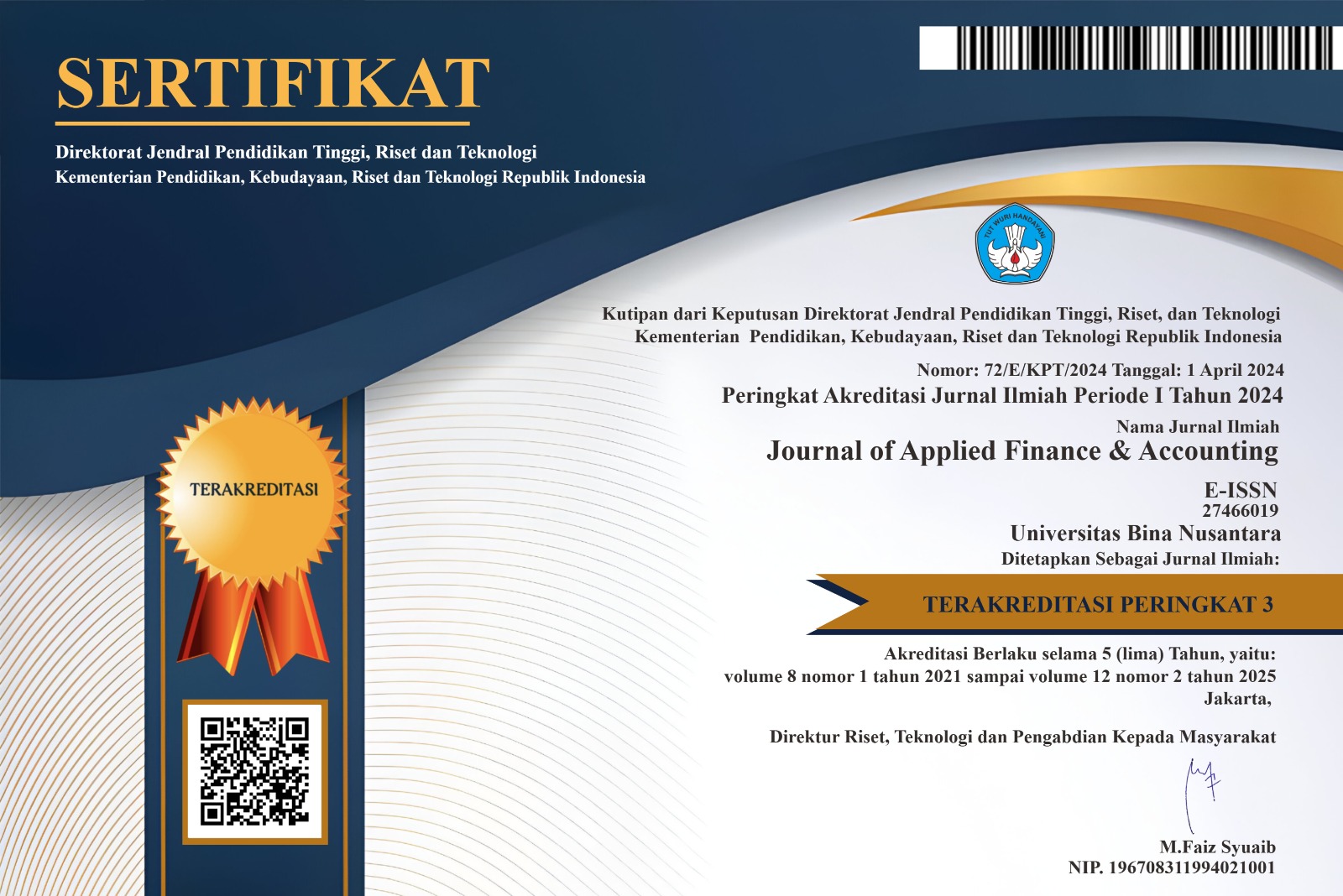Identification of Firm Multiplier of Comparable Firm Valuation Method on Indonesian IPO
DOI:
https://doi.org/10.21512/jafa.v1i2.128Keywords:
IPO, enterprise value/earnings before interest and taxes (EV/EBIT), multiple valuation, comparable firms, offering price.Abstract
The aim of this research is to find the relevant valuation measurement, firm multiplier, which is utilized by issuers or underwriters during IPO. This research uses companies that conducted IPO, in the Indonesia Stock Exchange (IDX), within year 2001 to 2007, as the research sample. The hypotheses are developed to find the relevant valuation multiplier. The data are analyzed using One-Sample T Test, Kolmogorov-Smirnov (K-S) Test, and Binomial Test. The empirical results suggest that there are similarities and differences in valuation results when comparable firm valuation is utilizing different firm multiplier. Among the five methods, i.e. arithmetic mean, median, harmonic mean, closest ROA, and closest TA, the closest TA method performs the worst in Indonesia capital market during 2001-2007. There is no statistical difference between selecting arithmetic mean, median, and harmonic mean methods. The closest ROA method outperforms the arithmetic mean and closest TA methods; however it has similar performance to median and harmonic mean methods.
Downloads
Published
Issue
Section
License
Authors who publish with this journal agree to the following terms:
Authors retain copyright and grant the journal right of first publication with the work simultaneously licensed under a Creative Commons Attribution License that allows others to share the work with an acknowledgement of the work's authorship and initial publication in this journal.
Authors are able to enter into separate, additional contractual arrangements for the non-exclusive distribution of the journal's published version of the work (e.g., post it to an institutional repository or publish it in a book), with an acknowledgement of its initial publication in this journal.
Authors are permitted and encouraged to post their work online (e.g., in institutional repositories or on their website) prior to and during the submission process, as it can lead to productive exchanges, as well as earlier and greater citation of published work (See The Effect of Open Access).




